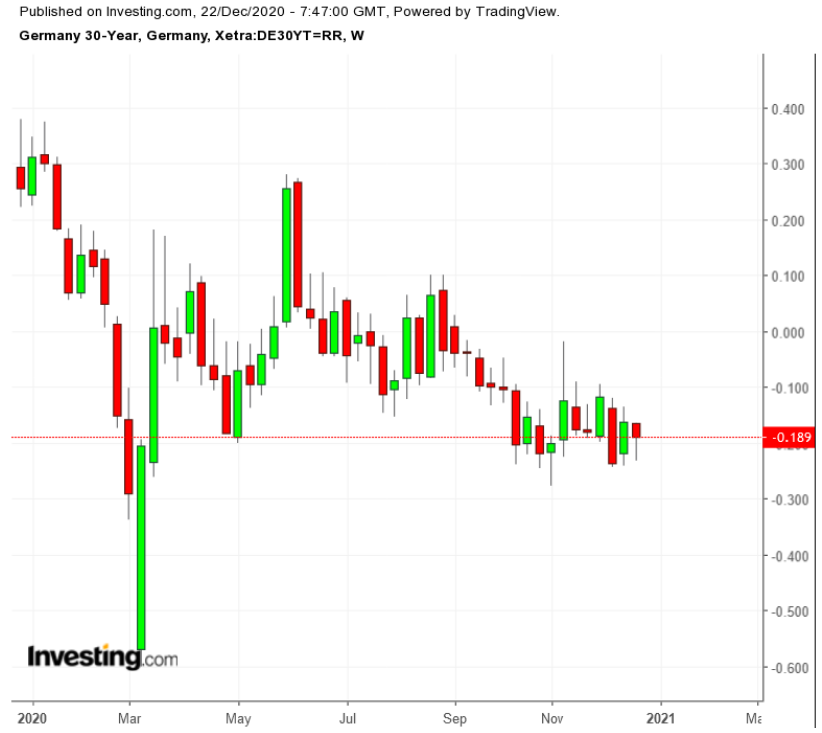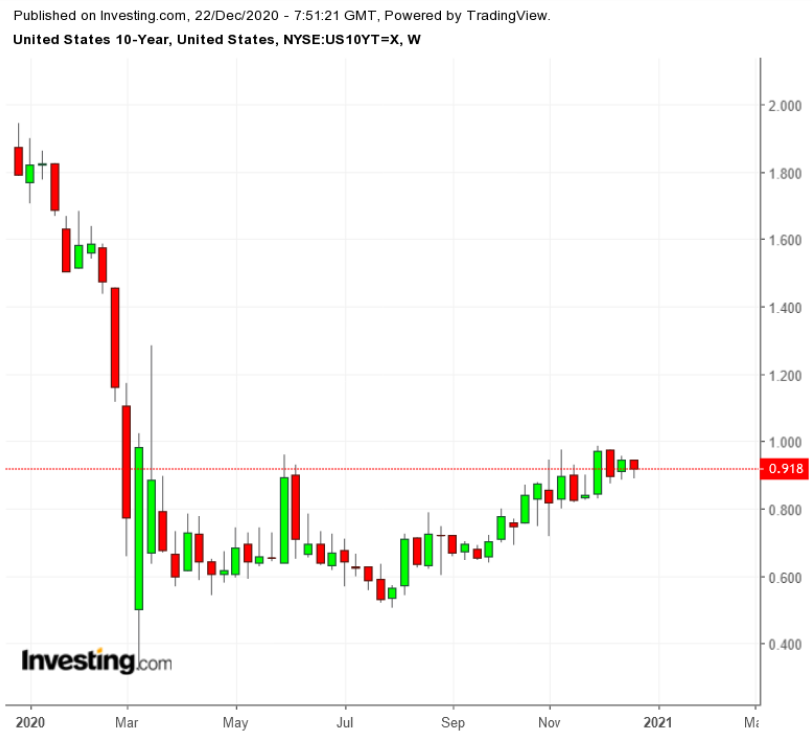The prospect of a substantial sale of EU bonds over the next few years is enlivening the European government bond market after the debut of SURE bonds in October was massively oversubscribed with €233 billion in offers for the €17 billion available.
In the meantime, nearly €40 billion of the bonds supporting the EU’s emergency unemployment aid have been sold. The December compromise on the EU budget framework freed the way for bond issuance to fund the €750 billion economic recovery plan, while another €60 billion are on tap for SURE.
Trading volumes in EU bonds are now a multiple of what they were, pulling equal to those of France or Italy. The robust market has the potential to create an alternative to U.S. Treasuries if not exactly a rival. Bid-ask spreads on the EU bonds have narrowed significantly with the additional liquidity.
Bond Boom Changing Shape Of Market
However, outstanding EU bonds are a fraction of Germany’s bunds. The current benchmark bond in Europe has also come roaring back after a drought from Berlin’s balanced-budget policy has given way to a flood of pandemic-induced borrowing from Europe’s largest economy.
Germany’s borrowing in 2020 grew to more than €400 billion, a record and nearly double the original plan for the year.

For 2021, issuance will be close to €500 billion, tilting slightly to short-term money market instruments but with nearly €230 billion in notes and bonds running from two to 30 years in maturity.
The bond boom is also changing the shape of the market. For starters, it is stemming the retreat of European banks from primary dealerships, which require banks to conduct the government auctions and support the secondary market. It is a marginally profitable business for a banking sector already suffering from depressed margins.
The median number of primary dealers per country had shrunk to 16 from 20 over the past five years, according to the Association for Financial Markets in Europe. As government bond issuance has almost doubled over the past year, the ensuing trading activity has also made it more profitable to act as a primary dealer.
A further incentive is getting to the head of the line for bank syndicates, which governments use for larger placements. Germany, for instance, used a bank syndicate to place its first green bond in May, and again for a conventional 30-year bond in September.
Banks earn substantial fees in these syndications. This means governments pay a bit more but the volume and sharper pricing from bank customer demand make it worthwhile. Also, for many EU countries, negative yield on the government bonds means they can make money selling the bonds.
The UK’s Debt Management Office pushed back Monday on a query from Parliament about whether syndication got the best price for taxpayers by saying the method is particularly valuable for larger sales and in times of turbulence because banks can hold the bonds on their books and sell them to investors as market conditions permit.
Treasuries Remain Largest And Deepest Bond Market
U.S. Treasuries, however, remain the largest and deepest bond market, and nothing from Europe will be able to match it in the foreseeable future.

When Federal Reserve policymakers kept mum last week about shifting the balance of bond purchases toward longer-dated maturities, analysts began predicting higher yields and a steepening yield curve.
The arrival of COVID-19 vaccines and the expected economic boom even revived talk of accelerated inflation. Both are bearish for Treasuries as investors will shift out of safe-haven bonds and demand higher yields.
Forecasts for yield on the benchmark 10-year Treasury note range up to 1.6%, compared with below 0.95% currently, after gains from below 0.9% on news that Congress had agreed on a new round of fiscal stimulus.
The 10-year breakeven inflation rate—a measure of expectations derived from the difference between the 10-year yield and that the inflation-protected 10-year—rose to 1.95%, its highest in a year and a half.
